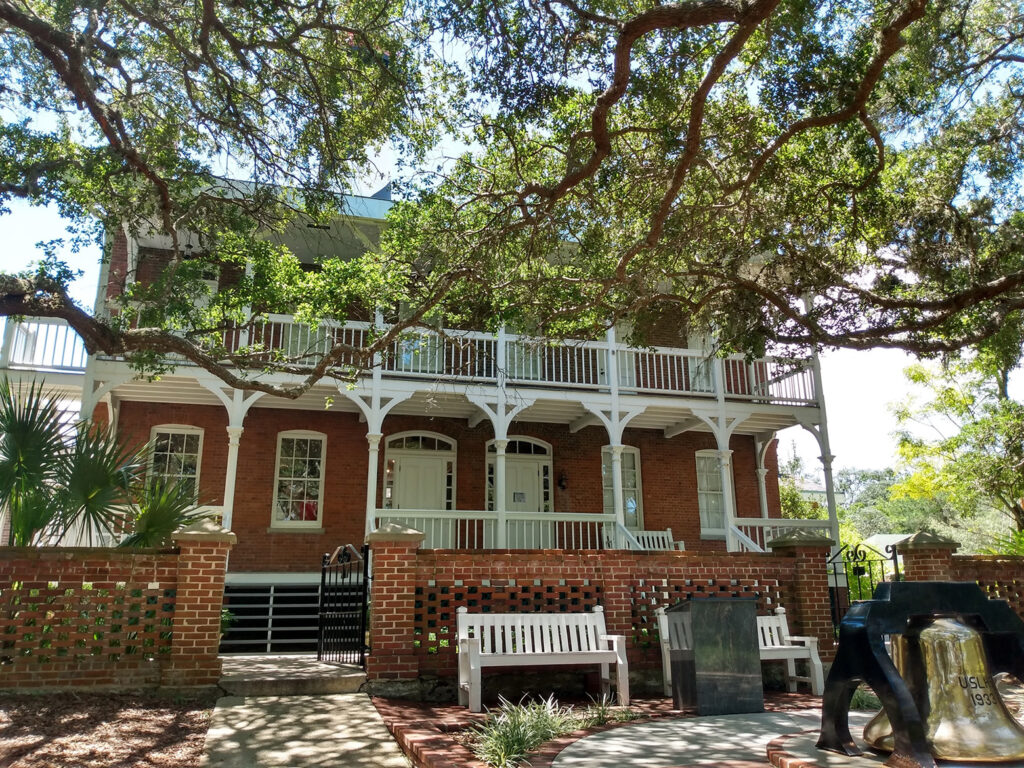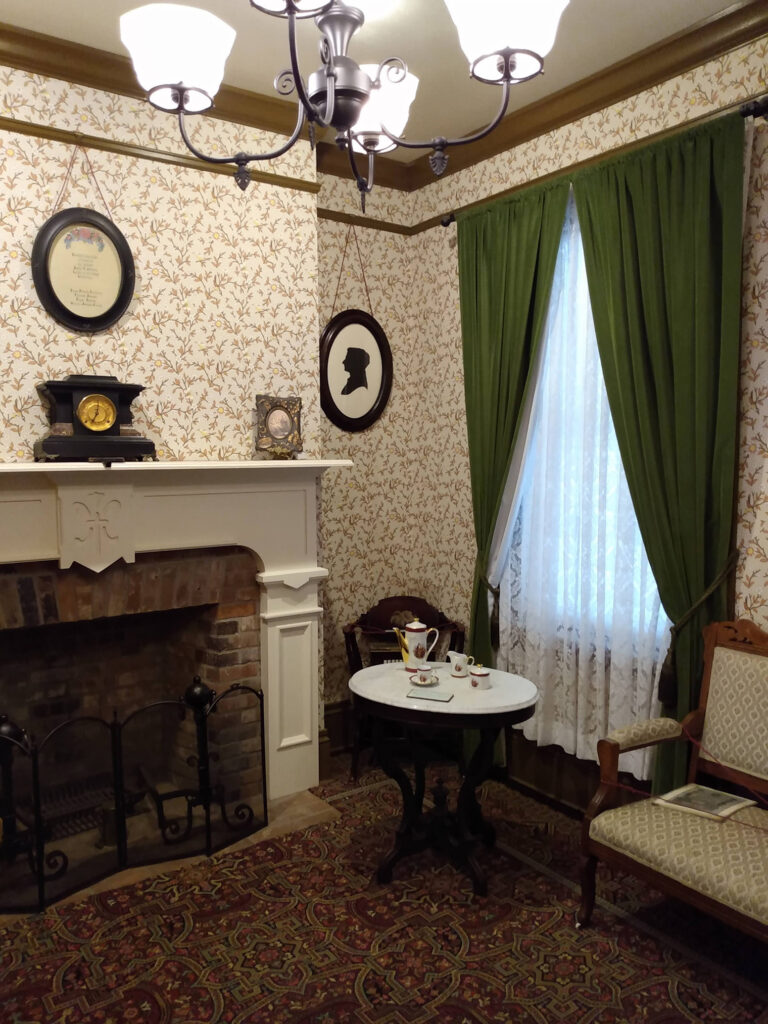The audio version of post was first shared in Episode 39: A Book-chat about The Bride of Blackfriar’s Lane with Michelle Griep & a Review of Until Leaves Fall in Paris by Sarah Sundin
Today we take a peek at the women who served at St. Augustine Lighthouse, World War II and beyond.

The New Lighthouse
- By 1871, rising sea levels made it clear the lighthouse tower which had stood for 130 years would eventually be washed away. A new 165-foot lighthouse was built farther from the water, and was completed in 1874. It housed a beautiful, first-order Fresnel lens that shone three fixed-flashes 19-24 nautical miles out to see, depending on the atmospheric conditions.
- A large keeper’s house was built near the base of the lighthouse. The head lighthouse keeper and the first assistant each had two rooms downstairs and two bedrooms upstairs for their families’ use. The second assistant had a single bedroom upstairs that straddled the entrance hall below in the middle of the house. The house featured no indoor kitchens due to the heat and fire hazard, so instead two outdoor kitchens flank the house. A basement provided storage, as well as cisterns for rainwater.
- Lighthouse keepers took shifts keeping the light shining all night, climbing every two and half hours to refuel the lamp and wind the mechanism that turned the massive lens. They maintained the structure and even tended the navigational buoys offshore. Their families were respected members of the community and often entertained rich tourists staying in St. Augustine who came across the bay by cart or by rowboat to visit the lighthouse. Older children had to know how to tend the light in case some emergency incapacitated all the keepers.
- Two women served as keepers at the St. Augustine lighthouse, both after they were widowed. Maria Andreu’s husband fell to his death while painting the lighthouse in 1859, and she took over. Thirty years later in 1889, a second assistant keeper died of tuberculosis, and his wife Kate Harn stayed on in his place.

World War II and beyond
- Five years after the lighthouse lamp was converted to electricity 1936, the Japanese attacked Pearl Harbor. A Coastal Lookout Building was constructed at the St. Augustine Light Station, but it didn’t receive too much attention until a German submarine sank a U.S. ship off the coast of Jacksonville in April of 1942. While citizens used blackout curtains, the lighthouse reduced candlepower. In June, another German submarine dropped four men carrying explosives just a few miles north at Ponte Vedra Beach. They were caught and executed within weeks, but after that Coast Guard patrols on the beach were constant. Armed guards watched from the lighthouse 24 hours a day. Barracks for the Coast Guardsmen and a large shed for their Jeeps still stand on the lighthouse property today, now housing a museum and a WWII-themed snack shop.
- By 1970, the keeper’s house was no longer in use, and a fire destroyed the interior. In 1980, the lighthouse was nearly bulldozed to make way for development, but the local Junior Service League fought to keep it operational. A vandal shot the Fresnel lens and broke 19 of its prisms, so in 1991 the light was replaced with an airport beacon.
- Finally in 1993, the restored original lens was once again lit in the lighthouse. Today, the lighthouse and the restored keeper’s house operate as a non-profit museum. Its daymark, which identifies it during daylight for navigation purposes, is black and white stripes swirling up the tower with a red lantern on top. Its beacon sweeps in a thirty-second rotation, still keeping watch over the St. Augustine waters.

To the seafarers hundreds of years ago, lighthouses could mean the difference between life and death. In our days of GPS and radar navigation, we don’t rely on their light. But I find them inspiring. No matter how dark the night, a light still shines.

You have noted very interesting details ! ps nice website .